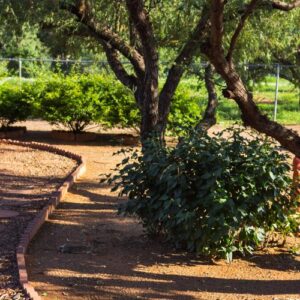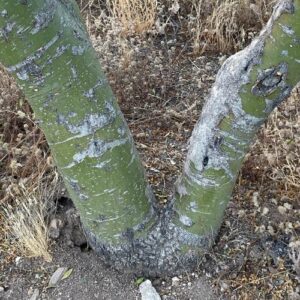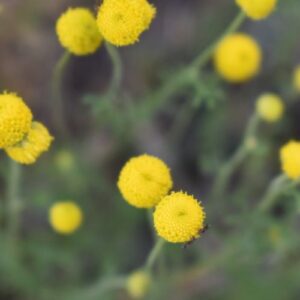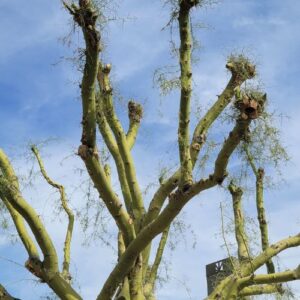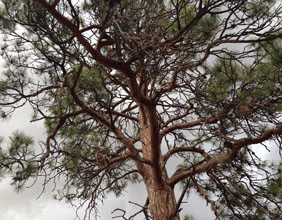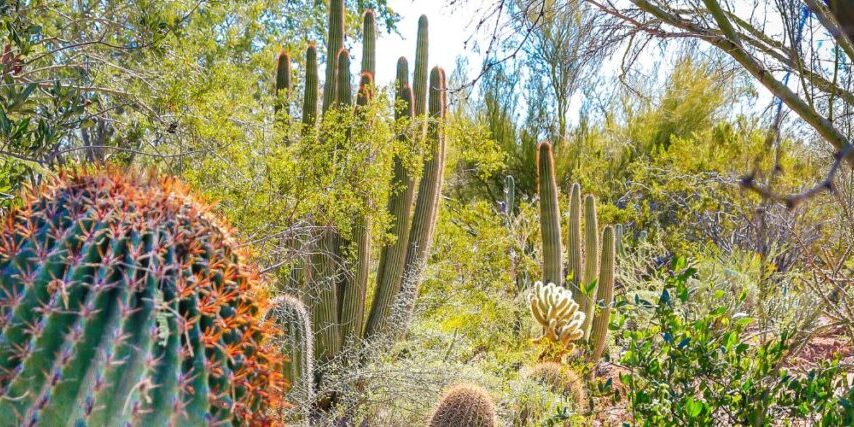
If you have lived in or visited other areas of the United States, you know that desert trees that grow natively in our region are very different from those that grow in other parts of the country. We have fewer sugar maples and burr oak trees, but you’ll find plenty of palo verde, mesquite, and ironwood trees.
Trees growing in the greater Phoenix and Anthem areas need to survive prolonged periods of drought, scorching temperatures, and excessive sunlight. Native desert trees are best adapted to endure these extremes.
In this article, we’ll walk through some of the things that make native Southwestern desert trees different, how these unique qualities help them survive, and what you need to do to ensure all your trees thrive.
Note that most trees or plants discussed in this article refer to native trees and plants.
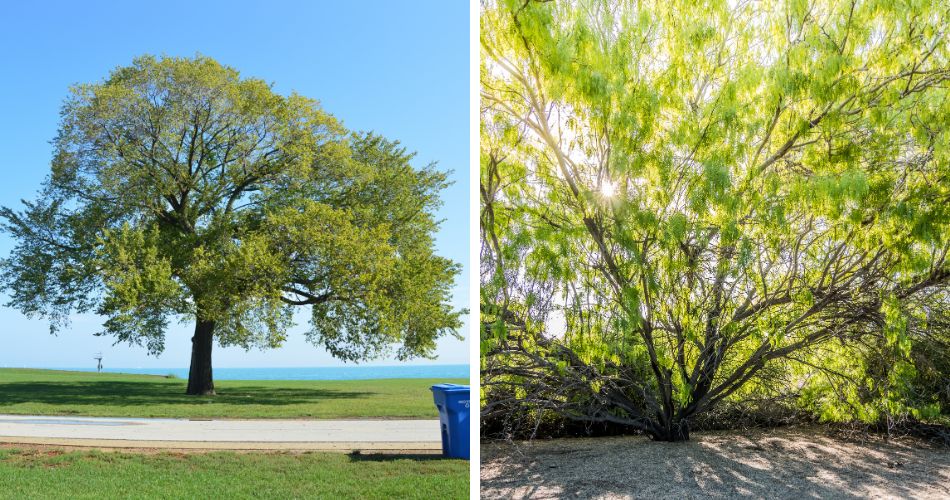
Trees like a sugar maple (left) have one trunk or stem, while desert trees like mesquite (right) have multiple trunks or stems.
Multi-Trunked Desert Trees are Common
You may view a tree native to other parts of the world and notice that it has one trunk, or stem, with branches radiating from that one trunk.
Here in the desert Southwest, trees are more likely to have multiple trunks. The prevalence of multi-trunked trees is important to remember when having your trees pruned. Many of our native trees tend to resemble shrubs due to these multiple stems and a shorter mature height, but that is their natural shape.
Multi-stemmed trunks may lead to issues later if they have V-shaped connections.
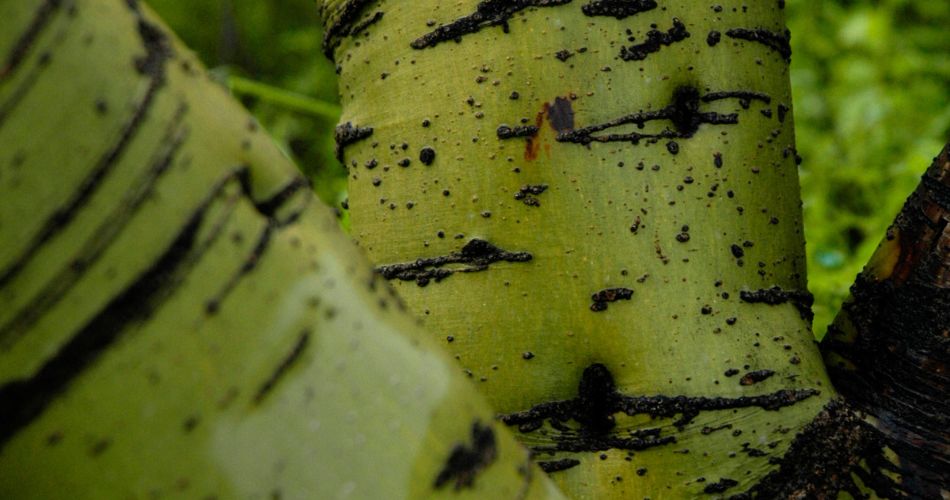
Some Desert Trees Photosynthesize Differently
Several kinds of palo verde trees are found in the area and are known for their green bark, along with palo brea trees.
The green bark helps trees photosynthesize or convert light into energy even without their leaves, which they often drop to preserve resources during drought. This ability to photosynthesize without leaves is why many types of cacti are also green.
Learn more about the palo verde, our state tree.
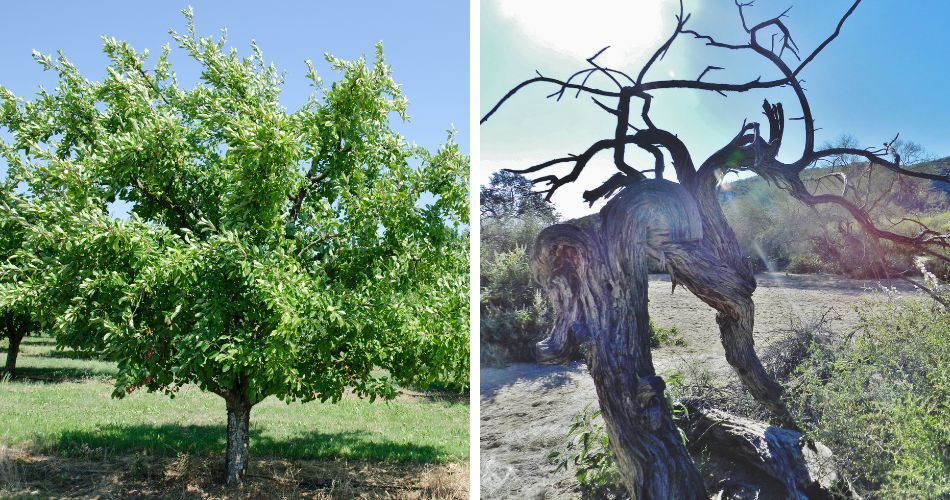
Plum trees, like the one in the image on the left, have much shorter lifespans than desert ironwood trees, pictured on the right.
Some Desert Trees Have Shorter Lifespans
Did you know that a tree’s lifespan is often related to how quickly it grows? Ironwood trees, for example, have incredibly slow growth rates (it takes them a long time to reach their mature height), but they can also live for hundreds of years.
Fast-growing trees, by contrast, usually have shorter lifespans. Trees that grow quickly also tend to have more fragile wood, which can break easily.
Some trees are only meant to last a few decades at most. Those trees will do their best to ensure the next generation of trees is growing before their demise, so they may drop many seeds (for new seedlings to develop) or put out a lot of suckers near the base of the tree.
Dwarf varieties of trees, especially fruit trees, tend to have shorter lifespans than their regular-sized counterparts.
So, while a desert ironwood tree can live for 1,500 years, a cultivated plum tree will last 15 or 30 years at most.
Trees that receive adequate water, nutrients, and maintenance will live longer than those that don’t receive those benefits, except those harmed by natural events, pests, or diseases.
See some average life spans for Arizona trees here
If you have property in the greater Anthem or Phoenix areas for a significant amount of time, you will likely have a tree nearing the end of its lifespan on your property at some point. Contact Titan Tree Care to schedule a professional tree removal if you suspect this.
Five signs it’s time to remove a tree
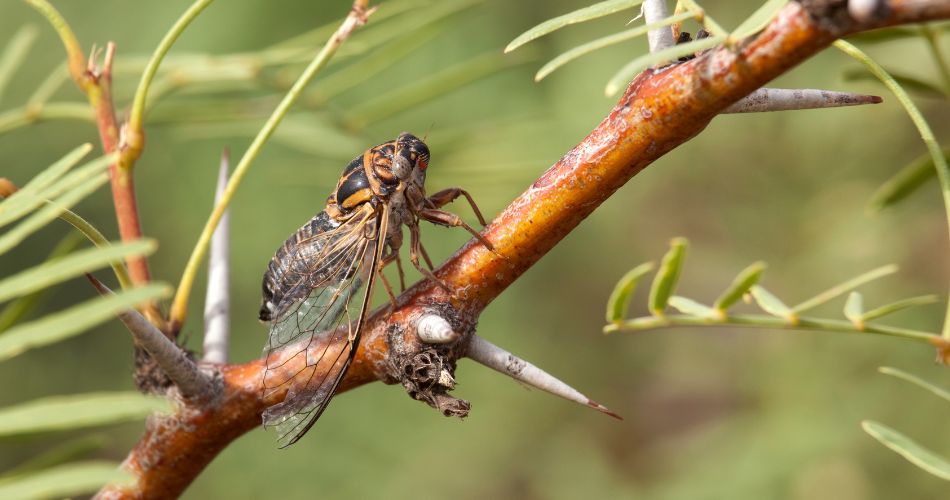
Many Desert Trees Have Thorns
The expression “hug a tree” should probably not be followed here in Arizona, as many of our trees (not to mention the cacti!) are covered with thorns or spines. Thorns help to protect the trees from hungry animals but can be painful to humans if you have to brush past them.
Interestingly, thorns may serve an additional purpose by providing shade to the tree, similar to how the spines on a saguaro are a self-shading element.
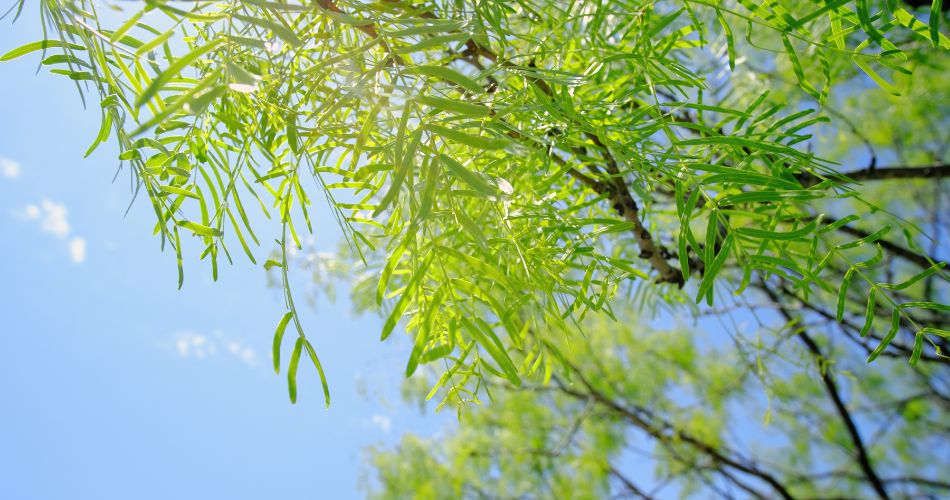
The Leaves of Native Desert Trees are Different
If you look closely, you will notice some differences in the leaves of trees native to the desert southwest. They are smaller than tree leaves from other areas of the country, and some leaves are dropped during periods of drought.
Desert Trees’ Leaves are Smaller
Desert trees and plants have smaller leaves for a reason. With the abundant sunlight in our region, the leaves don’t need to gather as much sun for photosynthesis. The leaves are also smaller to reduce the amount of moisture loss during photosynthesis. Many of these leaves also have a waxy coating, preventing evaporation and keeping trees cooler.
Desert Trees’ Leaves Drop Based on Rainfall
Have you noticed how much greener our area, in general, appears after a significant amount of rainfall? It’s not just your imagination! Many desert trees will grow leaves during rainy seasons but drop them during drier periods. Though not a tree, this can be most noticeable on ocotillo plants.
Other areas of the country have leaves falling only during the fall months, but many of our native desert trees can drop their leaves whenever there isn’t enough water to sustain producing them.
This phenomenon is referred to as drought tolerance or drought dormancy.
Some desert trees are evergreen (they keep their foliage all year). See our recommendations for evergreen trees to plant.
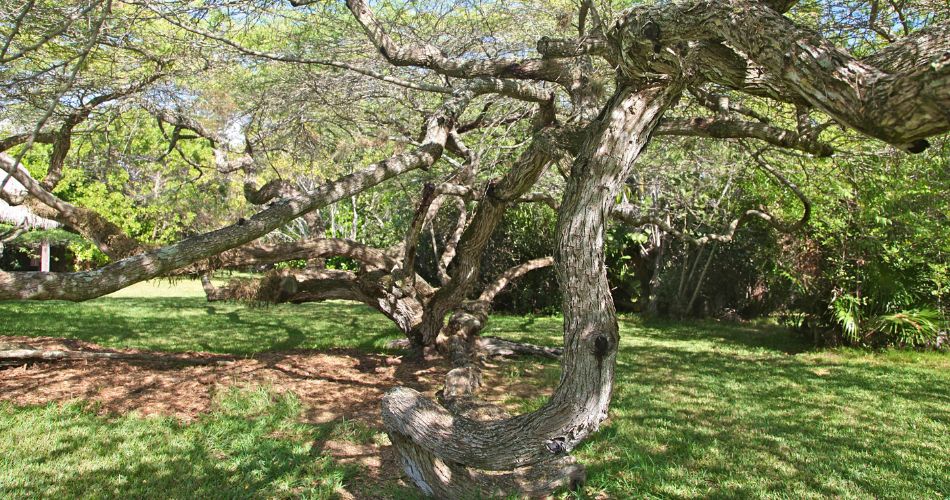
Root systems of desert trees such as this honey mesquite tree can be invasive.
The Root Systems of Desert Trees Can Be Extensive
Speaking of dry seasons, desert trees have complex root systems to help them survive periods of drought. Some trees have widespread shallow roots to allow them to receive rainfall quickly. These root systems can cover an area up to twice the diameter of the tree’s canopy!
Others have a deep taproot, which allows them to gather water from deep underground. Interestingly, the saguaro cactus has both types of roots!
Some desert trees with extensive root systems can become problematic when planted too close to buildings and water pipes. Mesquite tree roots, particularly, are famous for causing havoc on underground water pipes.
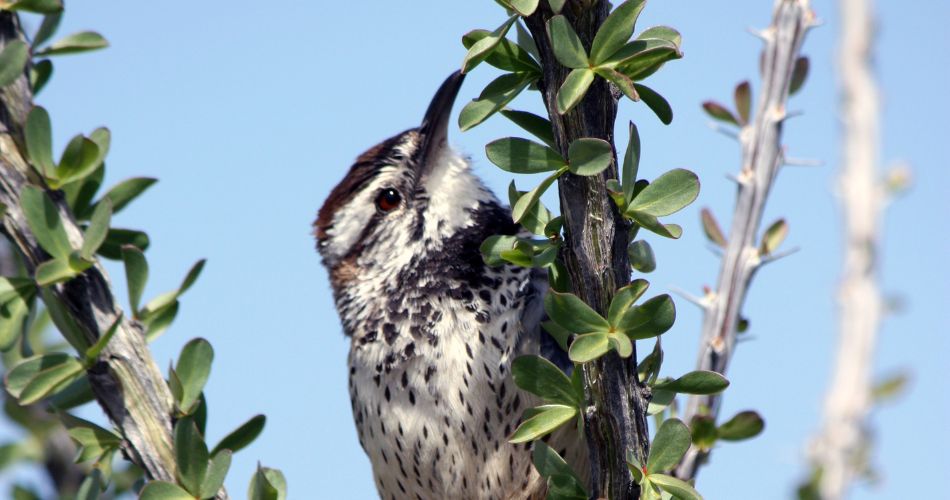
Desert Trees and Wildlife Coexist
Trees, plants, and wildlife work together to survive our intense desert climate. Many animals rely on native desert trees for food, shelter, and protection.
Even native pollinators, such as hummingbirds, bats, and bees, have a symbiotic relationship with our desert trees, especially those with spring flowers.
Badgers rely on palo verde trees to attract palo verde beetles, which they dig up and eat for food. The tree benefits from the badger as it removes a pest that can be harmful.
While non-native trees can sometimes provide food sources for our wildlife, they are often less helpful than native trees. In addition, non-native trees often have pests that don’t have a natural predator here. If you have non-native trees, consider scheduling some plant health care services to help them survive our climate and prevent pest and disease issues.
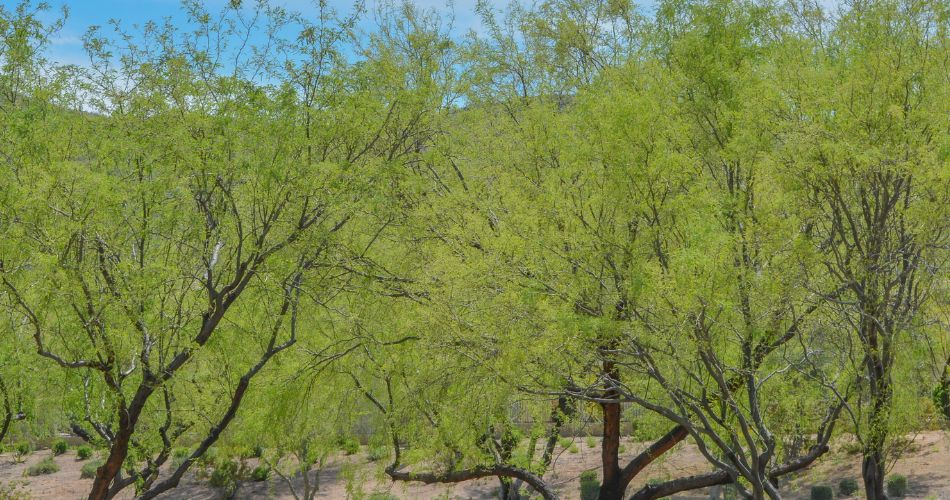
Because Desert Trees Are Different, You Need to Care for Them Differently
Desert trees are well-adapted to survive in Northern Phoenix’s hot and dry climate. However, even our native trees benefit from maintenance, preventive services, and extra care when needed.
Here are some ways to care for your desert trees:
- Plant the right tree in the right place. Some desert trees do best near available water, some grow too tall for most yards, and some can create a lot of litter from seeds or broken branches.. Consider the best place to plant a tree before digging the hole.
- Newly planted trees will need supplemental water for the first few years. All desert or desert-adapted trees must be routinely watered before their roots are wide enough to survive on rainwater alone.
- Even desert trees may benefit from watering during times of drought. Read our article on summer watering for Phoenix-area trees for more details. We also have information on watering trees in winter.
- Prevent broken branches and storm damage to your trees by scheduling regular tree pruning.
- Our summers are getting hotter. Learn how to protect your trees from heat stress.
- Make sure your trees are properly pruned. Improper pruning cuts can harm your tree and shorten its lifespan.
- The soil in urban and suburban settings has fewer nutrients than in the desert. Schedule soil and tree fertilization treatments to keep your trees healthy.
- Pests and diseases can kill trees quickly. Contact Titan Tree Care if you suspect any tree pest or disease issues.
We hope this article has brought you a whole new appreciation for our desert trees and how they can survive in our unique corner of the world.
More Articles Like This

Titan Tree Care is a full-service tree care company located in Anthem, AZ and serving all of North Phoenix. We offer a wide range of services to meet your tree care needs, including tree and palm trimming, tree pruning, tree removal, stump grinding, and more. We also offer insect or disease treatments and fertilization services. We are dedicated to providing high-quality, safe, and effective tree care services to our customers and work hard to ensure that your trees are healthy and look their best.



